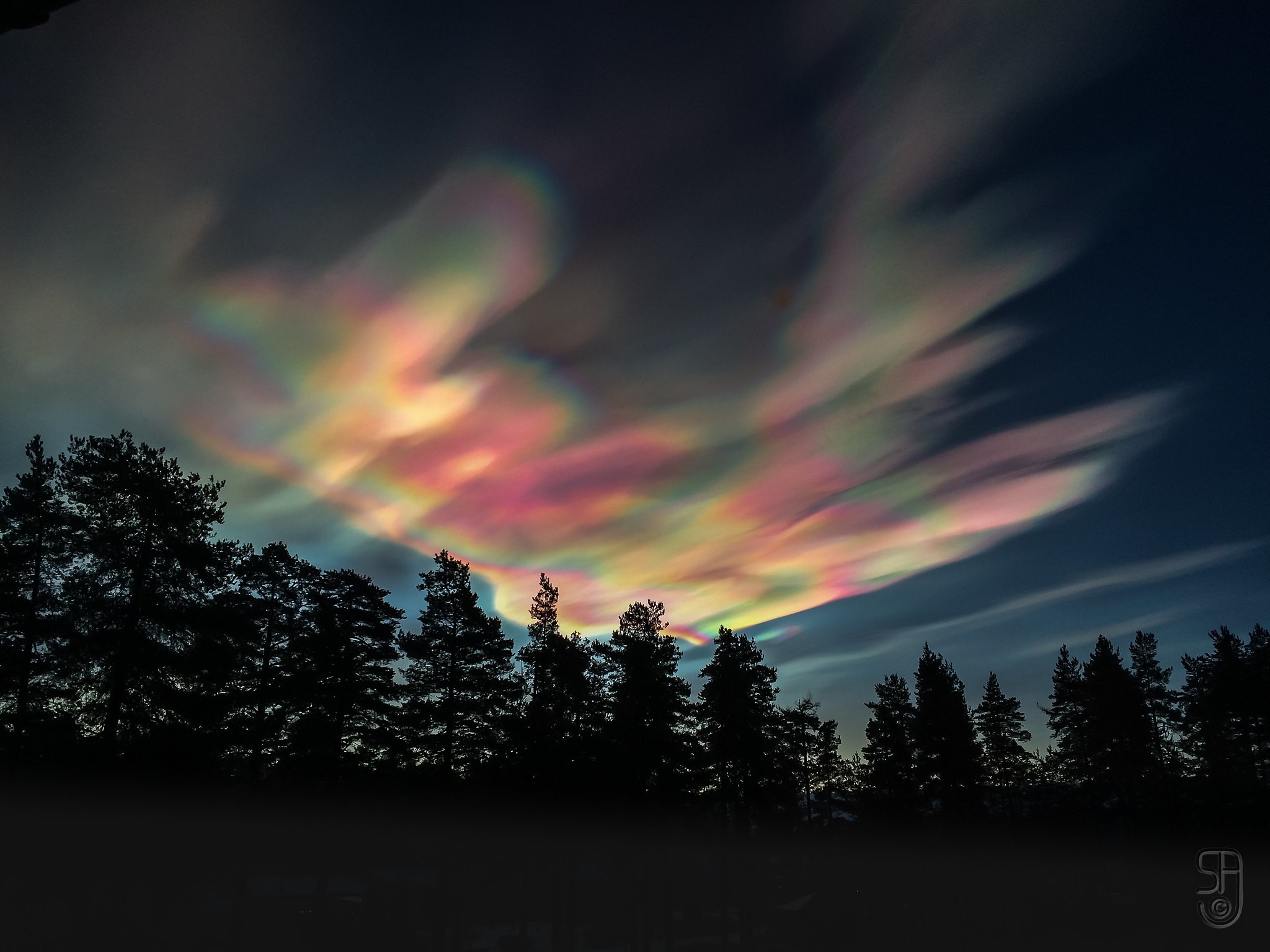Temperatures are achingly cold in the stratosphere over the Arctic, which can only mean one thing: it’s perfect conditions for psychedelic skies filled with rainbow-colored clouds.
ADVERTISEMENT GO AD FREE
Type II polar stratospheric clouds (PSCs) are known as one of the most beautiful cloud types in Earth’s repertoire, appearing above the Arctic and Antarctic as softly glowing whisps with a colorful iridescent shimmer.
Also known as nacreous clouds or “mother-of-pearl clouds”, they form during winter and early spring in the polar stratosphere, the second-lowest layer of Earth’s atmosphere, which is normally too dry for clouds. However, when temperatures are low enough – lower than -78°C (-108.4°F) – the stratosphere can produce PSCs despite the parched conditions.
According to current data from NASA’s Goddard Earth Observing System, stratospheric temperatures in the upper reaches of the Northern Hemisphere are already cold enough for Type II PSCs to form, and they are forecasted to drop even further by the end of January.

A photograph of polar stratospheric clouds over Kongsberg in Norway, taken by an iPhone 5.
Nacreous clouds live around 20 to 30 kilometers (68,500 to 100,000 feet) above Earth’s surface when water vapor and other chemicals in the atmosphere freeze into tiny airborne ice crystals.
They typically appear in the polar stratosphere when the Sun dips just below the horizon. Due to their tiny ice crystals scattering light in unique ways, these rare clouds possess a striking, luminous glow when hit with sunlight. Their high altitude, plus the curvature of the Earth’s surface, also helps to create the ideal illumination.
It is possible to occasionally see nacreous clouds as far as south as the UK. However, they are most common in polar regions during the winter when temperatures are sufficiently chilly.
ADVERTISEMENT GO AD FREE
As beautiful as they may be, PSCs can have a less-than-desirable effect on Earth’s environment by playing a key role in the formation of the ozone hole in the Antarctic and Arctic. The clouds contain chemicals, like nitric acid and sulfuric acid, as well as a surface that facilitates chemical reactions, producing chlorine radicals that deplete ozone.
The good news is that the Arctic has never had a significant ozone hole and the Antarctic’s ozone layer is the healthiest it’s been in decades.
So, if you’re lucky enough to catch sight of a nacreous cloud, feel free to enjoy them without too much guilt.
Source Link: It's Prime Conditions To See Famously Beautiful And Trippy Clouds In The Arctic